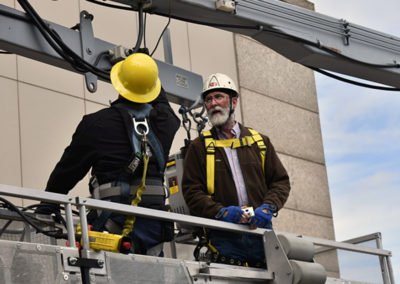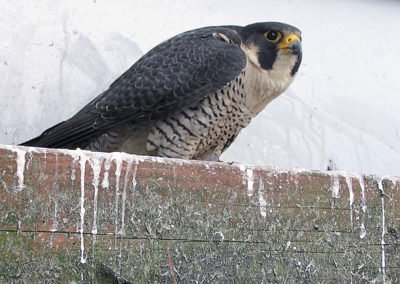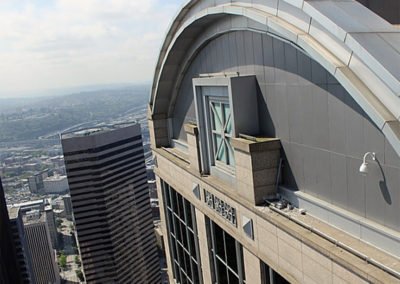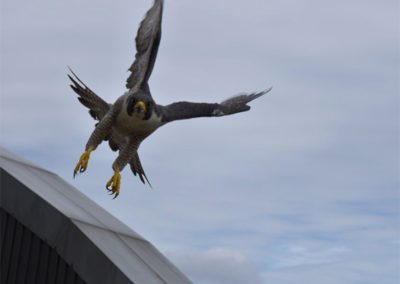For More Information
Peregrine Falcon. Urban Raptor Conservancy.
Ruth Taylor coordinated the Seattle Peregrine Project for many years and described the early history of Seattle Peregrine Falcons.

Report a sighting
If you see a peregrine falcon, please contact us with the location and what you saw. Extra points if you notice a band or get a photograph. More bonus points if you’re able to read the band with binoculars or a spotting scope.
Puget Sound Peregrine Project
News about Seattle’s flagship nest at 1201 3rd Ave:
2023 Three fledglings, all males. Took a few tumbles, but no known mortalities.
2022 Four fledglings — two males, two females. As far as we know, they are all still out there.
2021 The resident pair nested a month early! They fledged four young. Two died from window hits.
2020 For only the second time since 1994, peregrines did not nest at 1201 3rd.
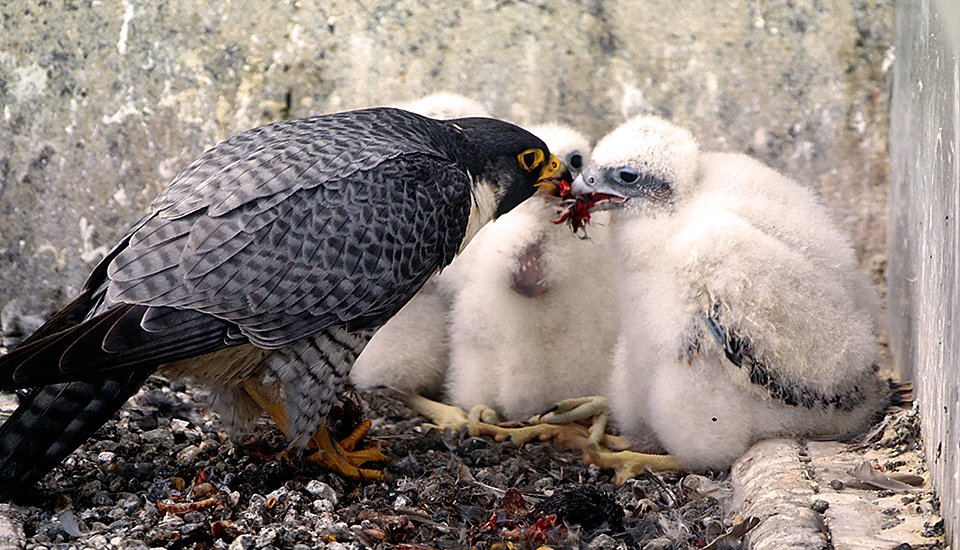
Stewart feeds three-week-old eyasses.
Ruth Taylor.
The decline in Peregrine populations from DDT and other toxins reduced the Washington State population to one known pair in 1976. Sightings gradually increased as the population recovered, and by winter of 1990-1991, an adult female had established a winter territory in downtown Seattle. Then in March 1994, two observers (Ruth Taylor and Ed Deal) independently discovered a courting pair of peregrines at 1201 Third Avenue in downtown Seattle in what was then Washington Mutual Tower, or WaMu. Tremendous support came from WaMu and Wright Runstad & Company, who allowed the Falcon Research Group to install a nestbox on a high ledge and focus a video camera on the birds. The Seattle Peregrine Project was born.
The pair (named Stewart and Virginia, for downtown streets) laid eggs and became a media sensation. But Virginia died after hitting a window when her three chicks were still tiny, and one chick died. However, with a great deal of human intervention, single dad Stewart successfully fledged the other two young.
That August, a new female peregrine, Bell, appeared downtown and immediately paired with Stewart. They nested successfully the following spring and for many years thereafter, Bell fledged 26 young, some of whom later nested in Seattle themselves. Bell died in July 2005, about two blocks from her home territory. She was found by none other than Ruth Taylor, who coordinated the Seattle Peregrine Project for many years.
Read more about Stewart, Virginia, and Bell at Seattle Peregrines.
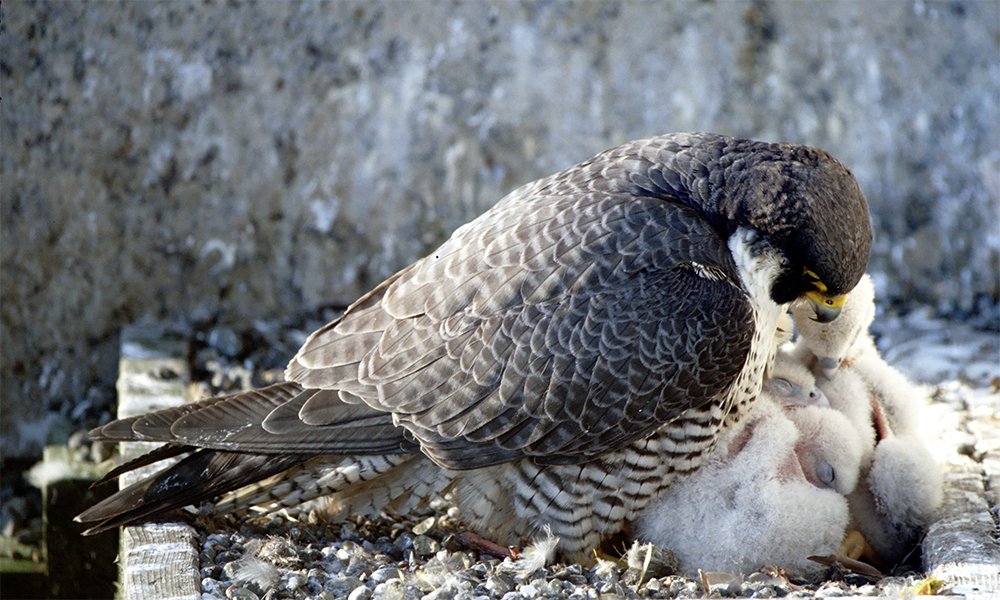
Ruth Taylor.
Project Goals
Since 1994 the Seattle Peregrine Project has monitored peregrine falcons nesting in the city. Each year, volunteers:
- Census the number of nests
- Count the number of fledged young
- When possible, use color-ID banding to band chicks and track outcomes, such as fledgling dispersal, longevity, and fidelity of adult breeding sites
The Seattle Peregrine Project would not be possible without alliances forged with a number of organizations. In particular:
- Wright Runstad & Company has embraced their resident Peregrine Falcons in downtown Seattle at 1201 Third Avenue for 26 years, providing a FalconCam during the breeding season and facilitating ID-banding of the young at their 55th-floor nest.
- To support our efforts to band nestling Peregrines on bridges, the Departments of Transportation in Seattle (SDOT) and Washington State (WSDOT) try to schedule their annual bridge inspections and provide access to bridges during banding season.
Results
2018 marked the 25th year of monitoring peregrine nesting at 1201 Third Avenue. As of 2018:
- 84 eggs have been laid, and 66 (78.5%) hatched
- 56 of the 66 young (85%) were banded
- Nine young died near their nestbox
- 57 (86%) fledged, and 11 (19%) died within two months
Of those 56 offspring banded in the past 25 years, six—four males and two females—were later found breeding elsewhere. The males all favored bridges around Seattle and environs, while the two females went native, one nesting on cliffs in the San Juan Islands and the other in the central Oregon Cascades. Read about the breeding chronology of the WaMu offspring from 1994 to 2007 here.
The breeding population of Peregrines in Seattle has slowly increased, stabilizing since about 2010 at about 5-7 pairs per year.
